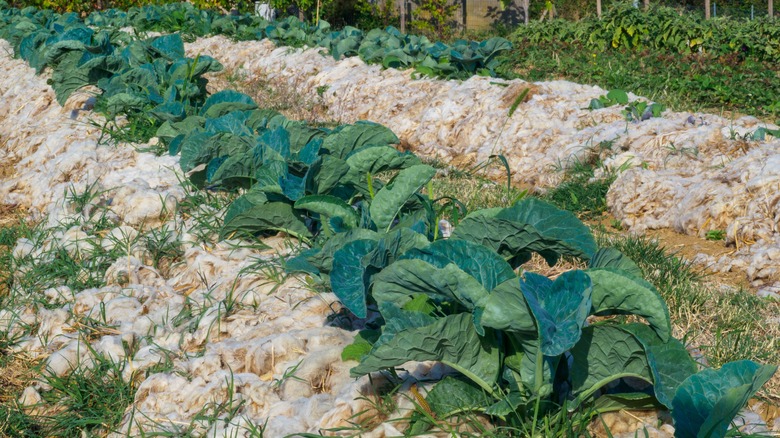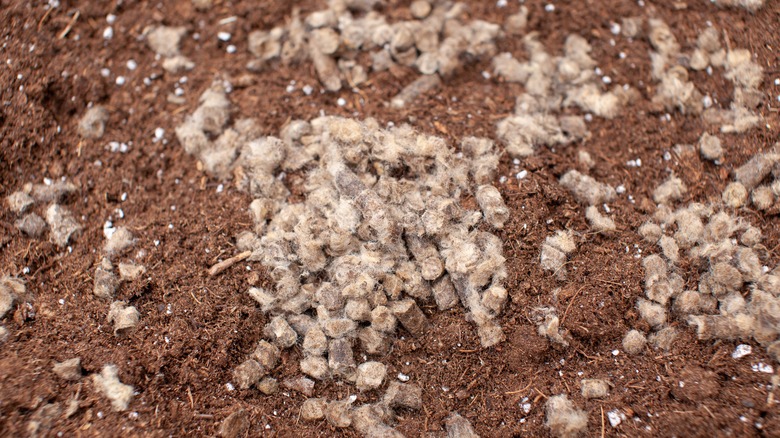Using Wool In The Garden Is A Trick You'll Wish You Knew About Sooner
Home gardeners have a lot of tricks up their sleeves when it comes to fertilizers and soil amendments. Coffee grounds, egg shells, sawdust, worm castings — the list goes on and on. But have you heard of adding wool to your garden? It turns out that wool can be used in a number of ways to the great benefit of your garden plants. Not only is wool an organic material, it's also biodegradable, and renewable. That makes it a sustainable alternative to traditional fertilizers that may take an environmental toll. Using wool also helps sheep farmers by offering them a market for low-quality "waste wool" that they would otherwise have to discard.
But how do you add wool to your garden? Do you just toss old sweaters, scarves, and mittens out there and see what happens? Not quite. There are a few different ways this works, but the most common are to use pellets made from wool or to use raw wool straight from the sheep. If you're a dyed-in-the-wool purist about how to grow your garden, you may be surprised to learn some new things about this versatile and multifunctional fiber.
The reason it works is because wool is a good source of nitrogen, which helps plants grow. According to the Center for Sustainable Agriculture, wool pellets can result in much faster, healthier, and increased yields for many vegetable crops. The pellets have also been shown to conserve water, act as a natural pest control, and help strengthen and aerate the soil — which might not be the case for all options, especially if you consider the harmful effects of chemical fertilizers.
Wool pellets for the win
Several companies are now making wool pellets out of waste wool that has no other marketable value. Most of this wool comes from the bellies and hind quarters of sheep and is too matted and dirty to sell. However, that soiled material makes for the perfect slow release of nitrogen. To make these pellets, the raw wool is shredded, heated, and crushed. The end result is a pellet that looks a lot like rabbit food. Then, these pellets are added to the garden at a ratio of about 1 pound to every 30 square feet.
Other ways to use wool in your garden are in your home compost or as mulch. In these applications, you add raw wool to your compost mixture or add it straight to your soil. It will biodegrade and add valuable nutrients to the soil. Here, the wool has many of the same benefits as the pellets, but also regulates ground temperature and reduces weed growth.
Another reason to consider using wool in your garden is because it is an all-natural alternative to synthetic fertilizers, which can contain ingredients that pollute the environment and harm your plants. These ingredients may include petroleum products, salt, and heavy metals. Organic fertilizers, on the other hand, come directly from natural sources such as plants and animals. Using sheep's wool is also a more environmental substitute to peat moss, which comes at a huge cost to the environment. When harvested, it releases carbon and other greenhouse gases into the atmosphere, thereby hastening global warming. Responsible gardeners are being encouraged to look for alternatives and it looks like wool may be the answer.

